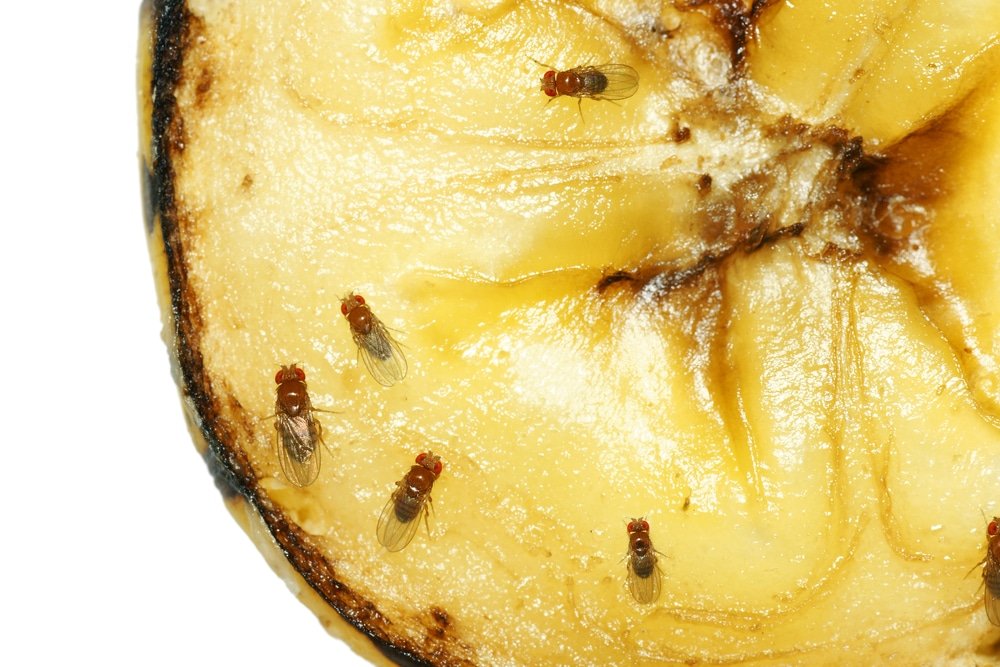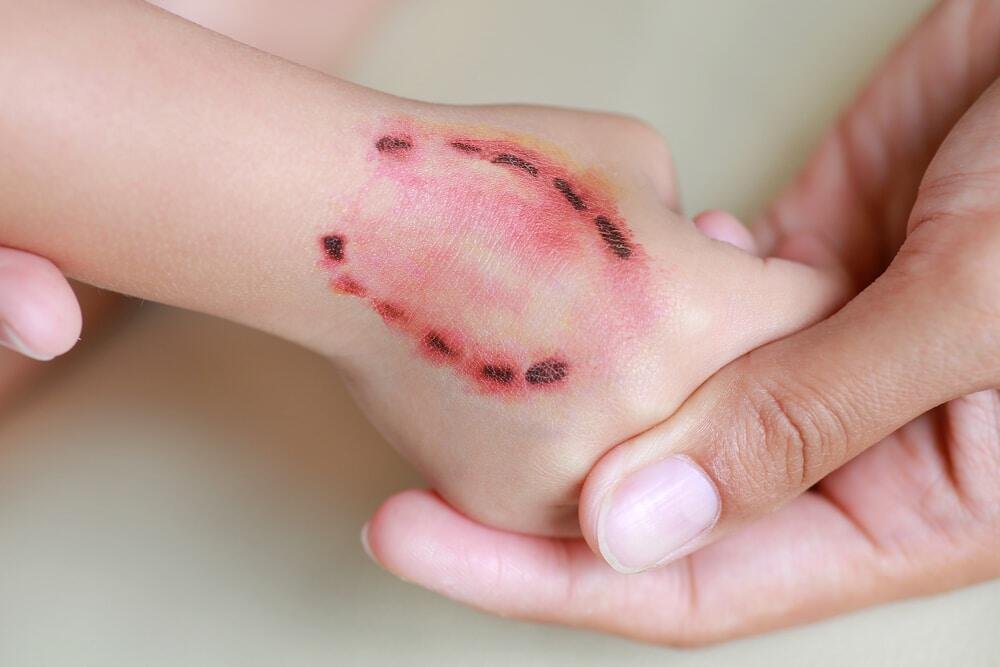Fruit flies and gnats are your basic pests- they pose no real risk to health, but are extremely annoying and seem to pop up and take over your kitchen, or anywhere you have fruits and vegetables out in the open. Resembling flies but much smaller, they may frequent anywhere they can get food from, including plants in your garden, moist soil, compost piles or even garbage. They are also more likely to be found in hot climates, or during summer time.
But the good news is that they aren’t that difficult to get rid of. Often times, you do not even need to use chemical pesticides, as natural remedies can help you get rid of them fast and easily.
How To Get Rid of Fruit Flies and Gnats Fast

1. Homemade Fruit Fly Traps
Making one of these traps is extremely easy, as all that is required is a mason jar, a piece of old fruit and a little aged bourbon or rum. Fill the jar about one-quarter with water, add in the piece of aged fruit and rum/bourbon, and add a couple drops of dishwashing soap. Soap changes the surface tension of the water, so that flies that land on the water to feed will be unable to escape and drown instead.
2. Citronella Oil
A popular all-natural insect repellant, a few drops of citronella oil around your home or kitchen helps to keep away these pesky flies. Citronella oil is not toxic to humans, so using it around the kitchen poses no danger. Keep in mind, however, that citronella oil does not kill the flies, but does a good job of getting rid of them and preventing them from coming back.
3. Install Window And Door Screens
Window and door screens should be installed in the majority of homes, especially if you live in an area with perpetual summer. The reason is simple; during the summer months, puddles are much more common, acting as breeding grounds for mosquitoes, gnats and many other water based vectors. Screens are effective, but you need to ensure you use a mesh size that prevents their entry in the first place. Fruit flies and gnats are significantly smaller than mosquitos, so aim for a size of 10000 mesh to be sure you prevent their entry.
4. Garlic
Garlic functions as an effective insect repellant for a range of pests, including mosquitoes, fruit flies and gnats. To make a garlic based repellant, soak a few garlics in boiled water, and let sit overnight. The following day you can add more water to increase volume. Then, test by spraying a small area where the pests seem to converge. After confirming no untoward effects on plants etc., you can then spray generously to repel them from congregating.
5. Using Diatomaceous Earth
Diatomaceous earth has become a fixture when it comes to controlling pests, especially if their larvae grow in the soil. This is exactly how you can take advantage of using Diatomaceous earth in this case. If you consistently find fruit flies or gnats in your home, there has to be an area where they lay eggs and new flies grow from. Chances are it is right outside your kitchen window, in a damp patch of mud, such as one closely connected to a drain or waste disposal exit. Mix some Diatomaceous earth around the soil in those parts, and prevent their larvae from becoming full grown adult gnats or fruit flies. Diatomaceous earth is effective thanks to the presence of sharp shard like silica molecules, which easily slice through the insects.
6. Blue Light Electric Trap
Insects are particularly drawn to blue light, an exploit that can be used to your advantage. There are many eco-friendly traps that do not use chemicals, but rather a blue light and low electric shock to incapacitate or kill flying insects, including fruit flies and gnats. It is important to place these traps in an area that is not directly competing for light, or its efficacy may be diminished.



7. Honey
Yes, while fruit flies and gnats love honey, along with several other insects, you can use this to your advantage to trap them. Honey is highly viscous, in that it is thick and prevents them from escaping once they land on the surface. The result is their death and struggling just causing them to get stuck further in the honey. You can either set an open jar with some honey and let nature take its course, or you can make a trap by smearing some on a sticky note, and attaching with a popsicle stick to make an attractant trap. Of course, you will likely attract ants as well, but they will all end up being trapped the same.
8. Dish Soap
It seems that dish soap with an orange smell is disaster for fruit flies, as they are attracted to it and go to it. this is go news, as you can either mix it in water and allow them to naturally drown as they enter it (soap alters water’s surface tension and makes it difficult for them to escape), or you can pour some in a flat dish and let that work in a manner similar to honey. If you have a high density of these flies, diluting the soap may be a better way to go.
9. Use Bleach
Many people underestimate the power of bleach, whether that be just for cleaning your tabletops, or in this case, killing larvae and destroying eggs. If you think you’ve exhausted searching all the hiding places and cannot find the source of your fruit fly infestation, try pouring some bleach down the drainer of your kitchen and bathroom sinks. The pipe network makes an ideal breeding ground for flies, as there is a steady stream of food residue and moisture to feed their young. Bleach effectively kills all of these and thanks to the lingering smell of chlorine very few organisms can survive. Pour some down the drains before you go to bed and see the difference in the morning. Just ensure your home is well ventilated or chlorine gas may accumulate in your home as well during the night with dangerous effects.
10. Use A Blow Dryer
Rather than applying heat to the flies, this time you will be using the reverse side of the blow-dryer (where air is sucked in) to pull them in. Set the output temperature to high, and flies will be fried by the time they come out. This method works fairly well, but is expensive and not a feasible solution if you have an infestation.
11. Boric Acid Powder And Sugar
Fruit flies are naturally drawn to sugar, as are many other insects. The key of this is to make a paste of boric acid and sugar, which has a consistency almost resembling honey. Allow the flies to feed. Boric acid acts as a desiccant, and causes their death via dehydration and water disruption. Boric acid is also very safe to humans, and thus can be used around the kitchen
Conclusion
Fruit flies do not pose a real significant threat to our health and wellbeing, but are annoying and unsightly. The first thing that comes to mind when we see flies is either poor sanitation, or improperly stored food. Font be put into an uncomfortable position because of these pesky flies, try some of our tips above and you should have relief in no time!



Join the 7‑Day “Better Gut” Plan
Pop in your email and we’ll send Lesson 1 + the printable list.






